
About Andrew Cusack
 Writer, web designer, etc.; born in New York; educated in Argentina, Scotland, and South Africa; now based in London.
Writer, web designer, etc.; born in New York; educated in Argentina, Scotland, and South Africa; now based in London. read more
News
Blogs
Reviews & Periodicals
Arts & Design
World
France
Mitteleuropa
Knickerbockers
Argentina
The Levant
Africa
Cape of Good Hope
Netherlands
Scandinavia
Québec
India
Muscovy
Germany
Academica
The Goerke House, Lüderitz
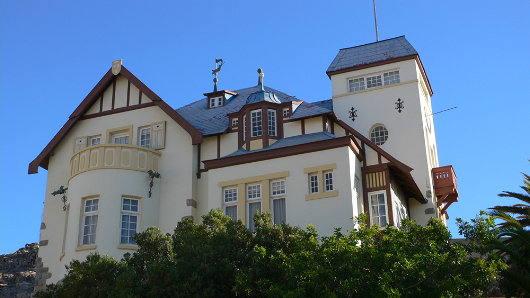
THE FAMILIAR PHRASE has a person in difficult circumstances being “between a rock and a hard place”. The Namibian town of Lüderitz is stuck between the dry sands of the desert and salt water of the South Atlantic — this is the only country whose drinking water is 100% recycled. Life in this almost-pleasant German colonial outpost on the most inhospitable coast in the world has always been something of a difficulty, but the allure of diamonds has at least made it profitable. One such adventurer who came from afar and made his fortune in this outer limit of the Teutonic domains was one Hans Goerke.
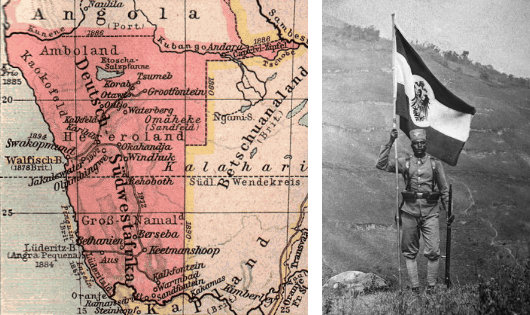
Goerke was born in Germany in 1874 and came to Deutsche-Südwestafrika (as Namibia was then called) in 1904 with the Schutztruppe, the Germans’ colonial fighting force. By 1907 he was provisions inspector for the German forces and after the discovery of diamonds at Kolmannskuppe (now Kolmanskop), he resigned from the army and sought his fortune in diamond prospecting. Goerke was quite successful, ultimately working for three different mining concerns, and, to make use of his luchre, he decided to build the loveliest house in all of Lüderitz.
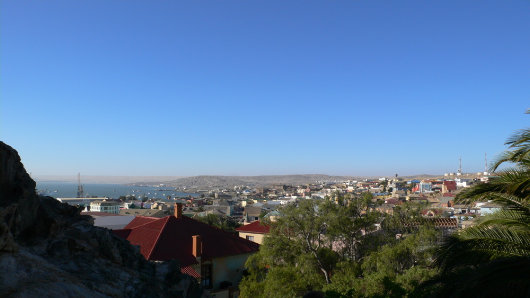
Goerke chose a splendid site at the end of Zeppelin Street on Diamentberg, with a splendid view of the town and the bay. Work on the house began in October 1909 and was completed by September of the next year. The design is believed to be the work of Otto Ertl, an architect who was quite active in the colony and is responsible for many of the most prominent buildings in Lüderitz and Swakopmund.
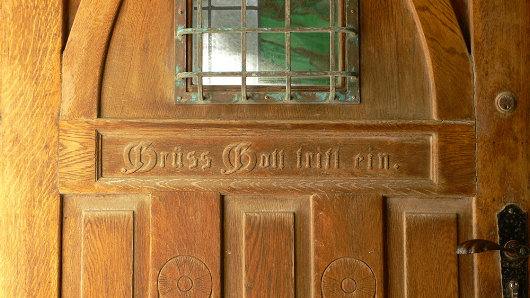
Grüss Gott tritt ein bring Glück herein more or less means “Saying hello brings happiness in”, and Goerke had this German saying carved on either side of the front door of his house.
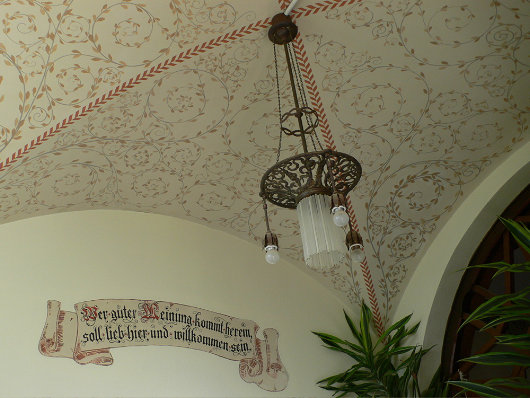
The entrance hall has some delightful detailing on the vaulted ceiling, and a further note of welcome painted onto the wall.
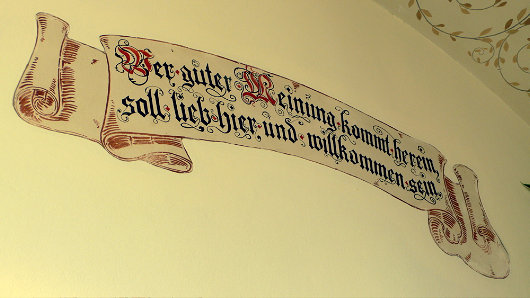
Wer guter Meinung kommt herein soll lieb hier und willkommen sein … “Those who feel well, come and enter to be loved and welcomed here”.
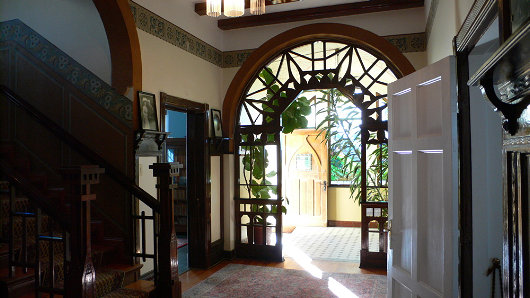
The Goerke House is noted for its widespread use of jugendstil designs and motifs. While the architect’s take on art nouveau was obviously German, it freely integrated African themes to mark the building’s location.
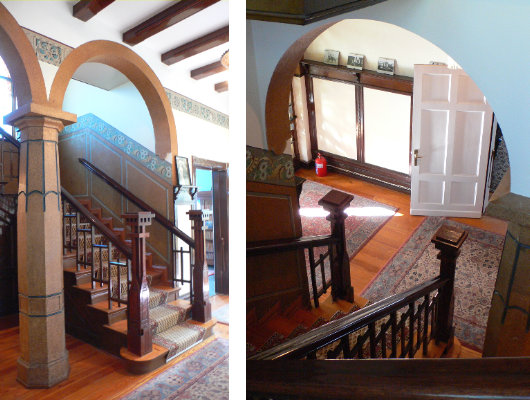
The round arches of the rundbogenstil often survived into the jugendstil.
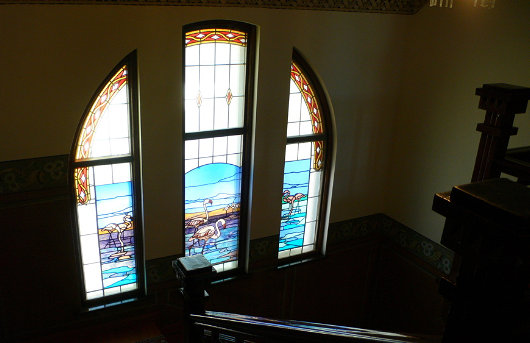
A stained-glass window fills the stair-hall with visions of pink flamingoes.
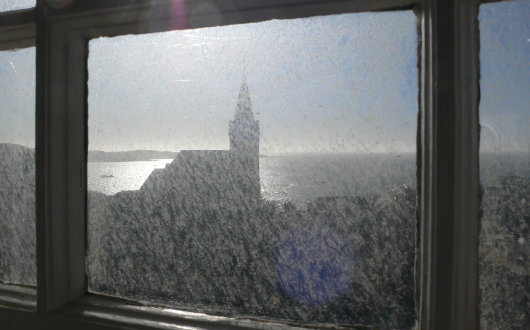
From a window in the Goerke House, the visitor can see the Felsenkirche perched on the very top of Diamentberg. One can also see, from the state of the window, how the wind and sand lash the buildings of Lüderitz.
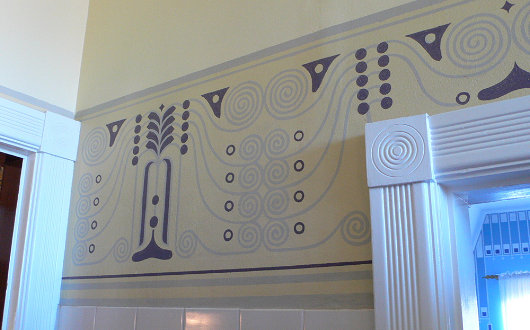
Some restored jugendstil detailing in a bathroom of the house.
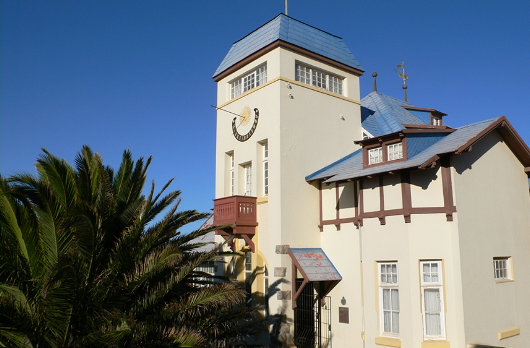
Somewhat sadly, Hans Goerke only inhabited his house at the end of Zeppelin Street for two years. He left Südwestafrika in 1912. In 1915, the South African generals Smuts & Botha invaded Deutsche-Südwestafrika and permanently ended Germany’s overlordship of the colony. The Treaty of Versailles declared the land to be a League of Nations mandate territory of the Union of South Africa, and from then until independence it was known as Suidwes-Afrika, or South West Africa.
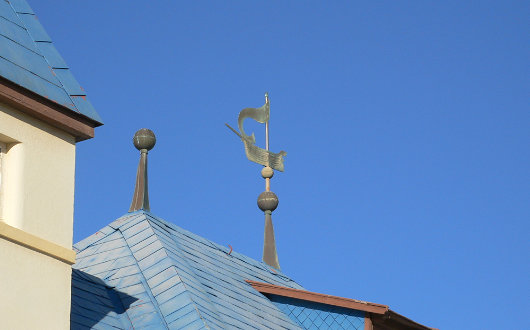
The house was purchased by Consolidated Diamond Mines (CDM) in 1920, who sold it on to the government of SWA in 1944. It became the official residence of the landdrost, or magistrate, and so became known as the Drostdy. In 1981, there was so little crime in little Lüderitz that the government decided to remove the landdrost to Keetmanshoop, and CDM bought the building back to use as a corporate guest house.
Since that time, CDM has become Namdeb, the joint operation of the Namibian government and the De Beers corporation, and Namdeb has worked to restore the house to its original appearance as best it can. Most of the original furniture is gone, but appropriate contemporary items have been placed around the house, and the company has made use of the ample photographs from the early days to bring the Goerke House back to its former glory.
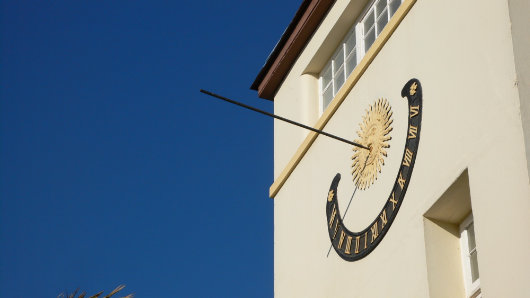
Search
Instagram: @andcusack
Click here for my Instagram photos.Most Recent Posts
- Burns Tower April 19, 2024
- Patrick in Parliament March 18, 2024
- Articles of Note: 13 March 2024 March 13, 2024
- Cambridge March 9, 2024
- Taken on Trust March 4, 2024
Most Recent Comments
Book Wishlist
Monthly Archives
Categories



Hello Andrew,
I frequent this section of your blog because there’s not a lot of architecture blogs out there that exclusively cover buildings executed in the traditional mode. I would love to read your thoughts on the Hotel Fouquet Barriere by Edouard Francois.
It would be much appreciated. Thanks!
Heavens, Mr Cusack, did you actually trek over to SWA?
I did indeed.
Admirable.
And your photos are excellent.
I hope you will favour us with more, and soon.
A really fine piece of Jugendstil..
“Wer guter Meinung kommt herein” would be better rendered “He who enters with good will” even though this is of course not a literal translation.
This sentence is to be found over the entry of many a German building, public as well as private.
It often continues: “Wer aber anders kommt herfür, der bleibe lieber vor der Thür”: “Who comes with other thoughts in mind, he another house’s door should find” In no way literal, but the meaning is the same.
A joy to look at! Many thanks.
Lüderitz is now on my list of places to see.
I enjoyed reading your article, Andrew. The Goerke house (and indeed the many other surviving Jugendstil buildings) in Lüderitz is a complete joy to behold. I have just come back from there and was bowled over. If you treck to the ends of the Earth, you are rewarded with splendour! If you are interested in Jugendstil architecture it is certainly worth the visit.
This Goerke is one of my relatives
He was probaly a son of Gustav Ernst Goerke (Ernst Friedrich Goerke) heiratet als Landwirt am 12.10.1873 in das Anwesen einer Emilie Franziska Krause geb. am 17.8.1848 in Klein Nebrau ein. (nahe Marienwerder)
The sons are Reinhold (1878, Rudolf Georg *1883, Robert *1887 und Willy *1891
Well researched and photographed (I’ve been there). One small flaw: the black colonial soldier next to the map is out of context – he is an East African askari. Beware of sourcing photos from the web!
We live in Australia but have visited this house trying to find my dads brother as they got separated 60 years ago trying to find any relatives related to rudolf alwin Ernst GÖrke / Goerke
My dad is willi Werner Goerke! Please contact me.
Any Relatives of Rudolf Alwin Ernst Goerke we are looking for you!
My dad only knows the name of his biological father and that he had a brother possibly called Wolfgang. They are from my dad was born in wurzen we have tried everything please if you know someone who might be related to Rudolf please contact me. Sheadbastian@gmail.com
Hello
My mother, Stephanie Hofmeyr, actually lived in the Goethe house as a teenager. Her father was a magistrate at the time
I believe De Beers offered him the house to thank him to help discussing with some minors, in their language, and managed to bring them back to work
How can I trace this amazing story? Anyone can help?
Thank you!
Just a question ?
My grandfather, Mr Pieter Christiaan De Jager was the Shool Head Master and himself with my Mother and her Brother stayed there, it was somewhere past the 1944.
Please confirm for me I have a photo of the house, will look it up and reply again.
Thank you.